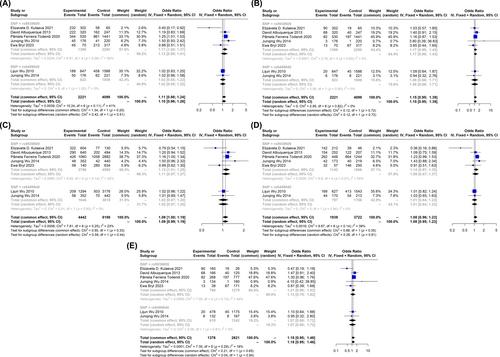Genetic Variants in the Fat Mass and Obesity-Associated Gene and Risk of Obesity/Overweight in Children and Adolescents: A Systematic Review and Meta-Analysis
Abstract
Objective
The variations in the single-nucleotide polymorphisms (SNPs) of the fat mass and obesity (FTO)-associated gene have been linked to being overweight or obese in children. In this research a thorough examination was performed to elucidate the connection between various FTO gene SNPs and overweight or obesity in children and adolescents.
Method
We searched PubMed, Google scholar, Web of Science and Scopus until January 2024 to find studies that investigate the association between different SNPs of FTO gene and the risk of overweight/obesity in children and adolescents. After filtering the relevant studies, meta-analysis was used to quantify the association of FTO gene SNPs within different genetic inheritance models.
Results
We have identified 32 eligible studies with 14,930 obese/overweight cases and 24,765 healthy controls. Our recessive model showed a significant association with rs9939609 (OR: 1.56, 95% CI: 1.20; 2.02, p < 0.01) and rs1421085 (OR: 1.77, 95% CI: 1.14; 2.75, p < 0.01). Besides, in the homozygote model, rs1421085 showed the highest association (OR: 2.32, 95% CI: 1.38; 3.89, p < 0.01) with the risk of obesity in a population of children and adolescents. Moreover, there are other SNPs of FTO genes, such as rs9921255, rs9928094 and rs9930333, which showed a positive association with obesity and overweight. However, their effects were evaluated in very few numbers of studies.
Conclusion
In this study, we have found that the FTO rs9939609 and rs1421085 are associated to an increased risk of obesity among children and adolescents. Besides, the findings of this study further reaffirmed the established link between rs9939609 and obesity in children and adolescents.


 求助内容:
求助内容: 应助结果提醒方式:
应助结果提醒方式:


